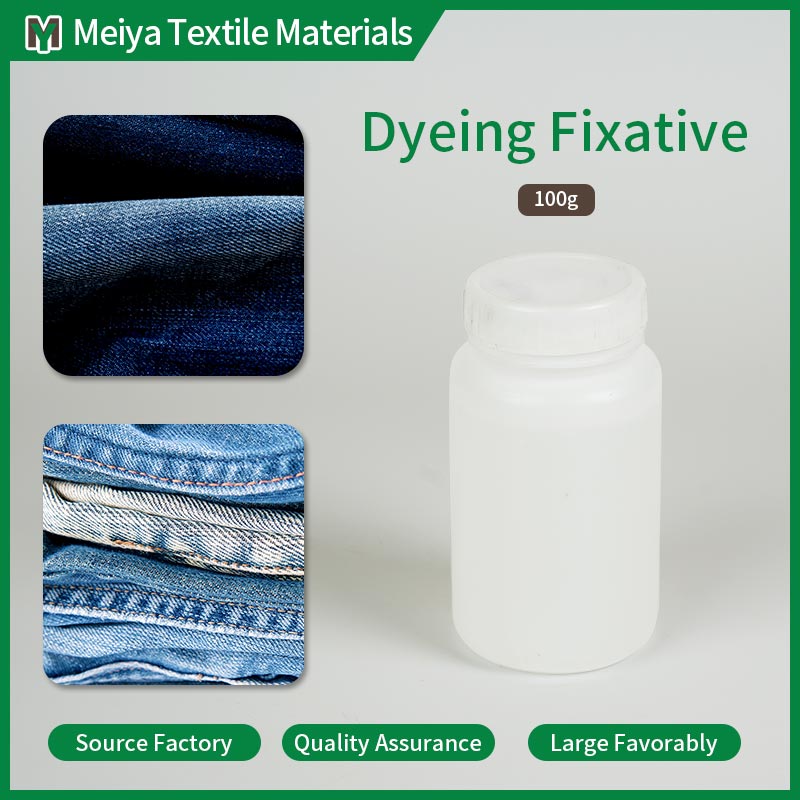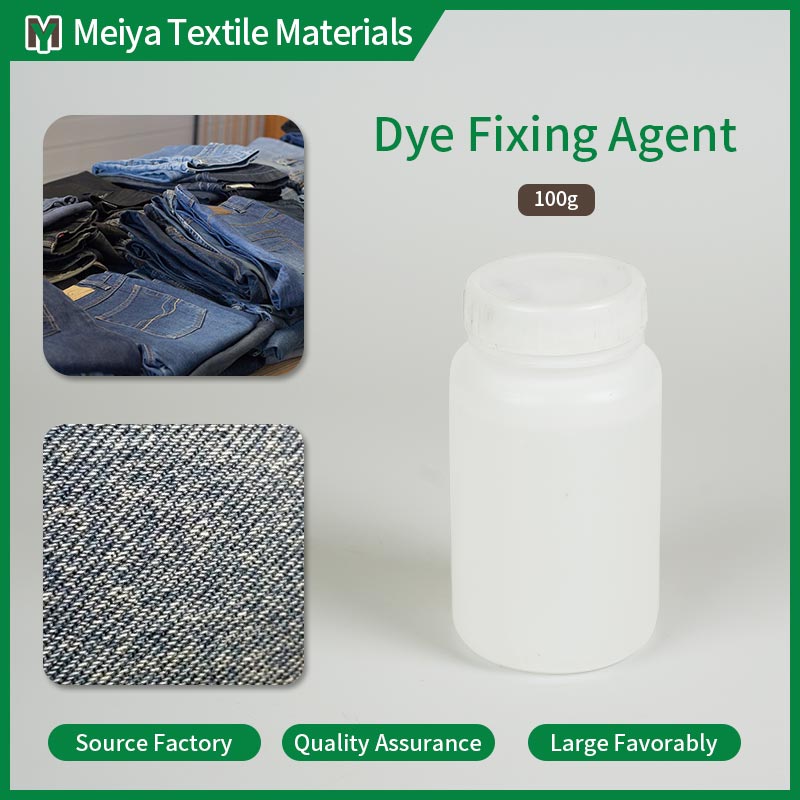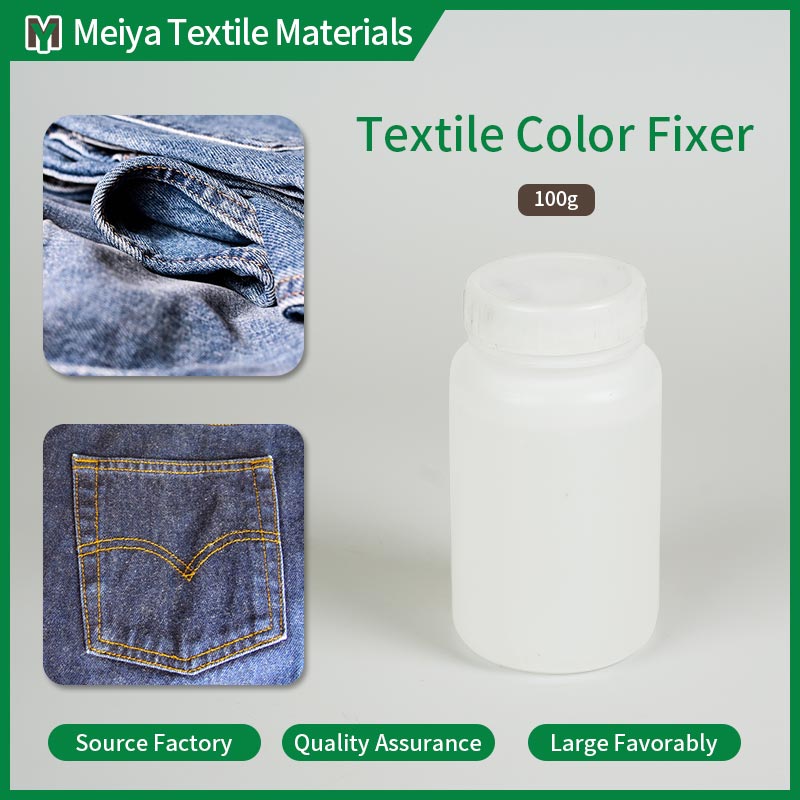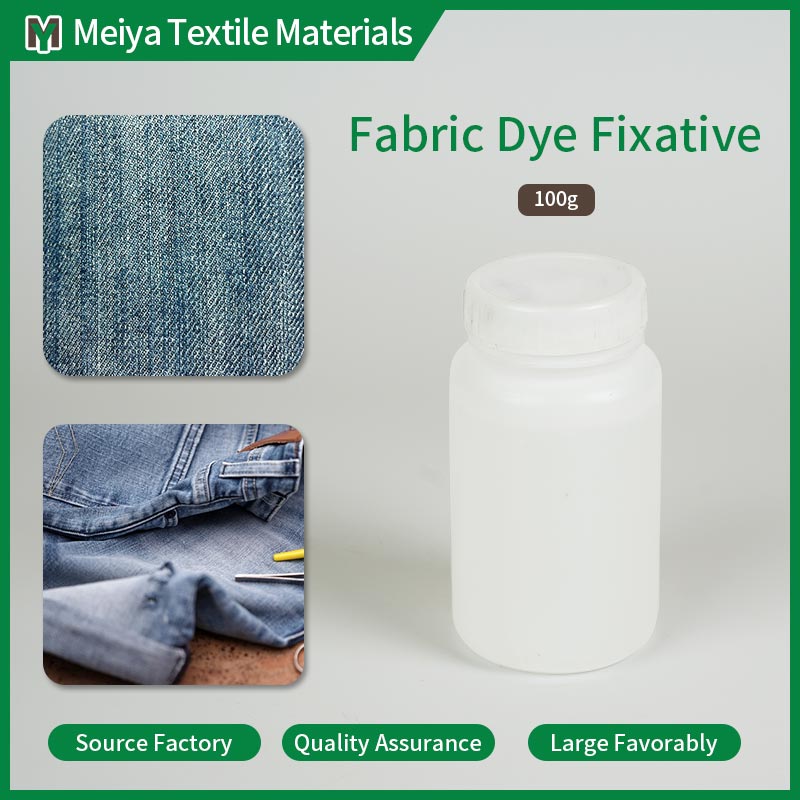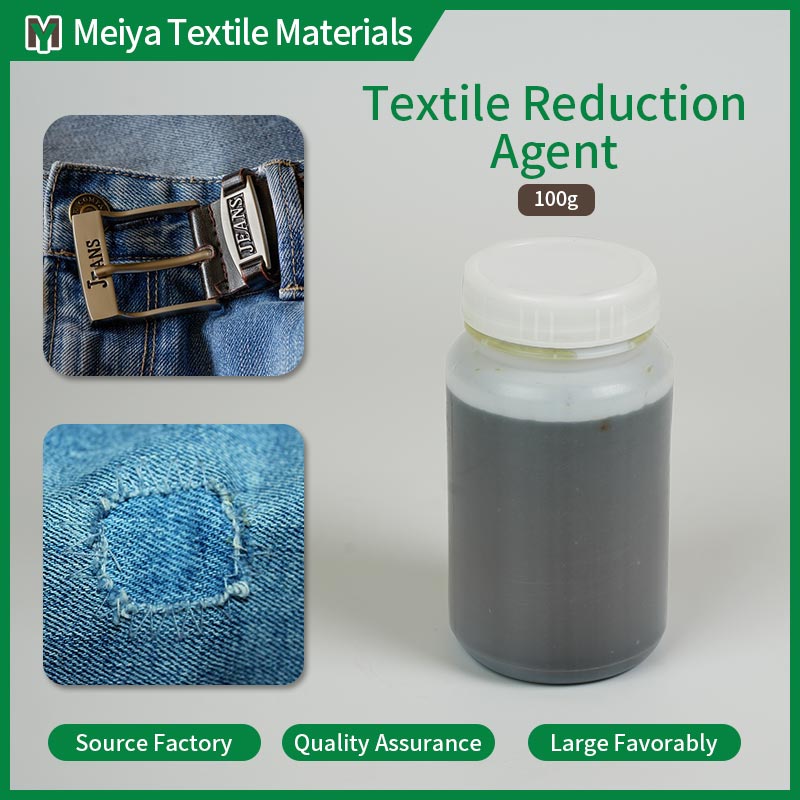Reducing Agent in Textile
Please click the button below to contact us.
Introduction:Reducing Agent in Textile is a type of chemical reagent used in the textile industry. This reducing agent plays an important role in the processing of textiles, usually referring to the reducing agent used in dyeing and finishing processes, such as for de-dyeing, soaping, bleaching or improving color fastness.
Product Description
Reducing Agent in Textile is a type of chemical reagent used in the textile industry. This reducing agent plays an important role in the processing of textiles, usually referring to the reducing agent used in dyeing and finishing processes, such as for de-dyeing, soaping, bleaching or improving color fastness. It can change certain chemical properties of textiles to achieve specific treatment effects.
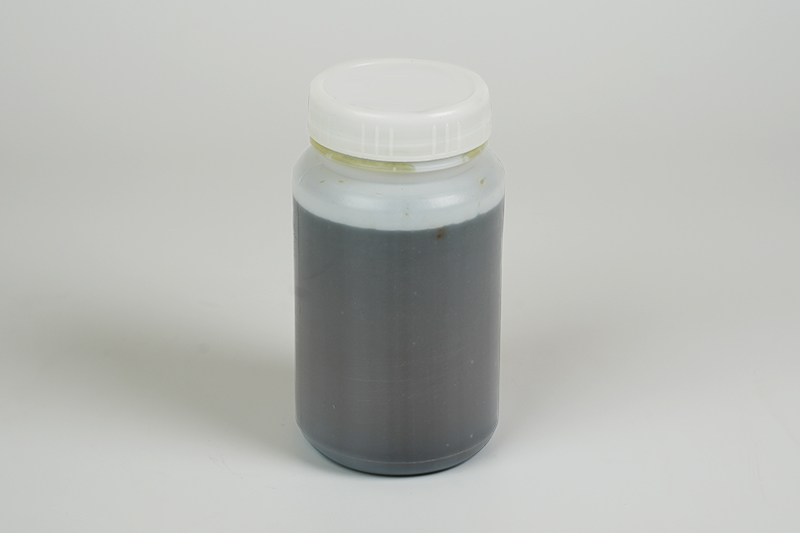
Reducing Agent in Textile Features:
High-efficiency reduction ability: The Reducing Agent in Textile has a strong reduction ability and can effectively reduce dyes and impurities in textiles. Under specific treatment conditions, it can reduce oxidized dyes to soluble reduced states in a short time, which is convenient for subsequent cleaning and treatment. For example, when treating textiles dyed with certain sulfur-containing dyes, the reduction rate of the dye can reach more than 90% after using this reducing agent, which greatly improves the purity and quality of the dyed textiles.
Improve the feel of textiles: It can chemically modify the surface of textiles to make the fiber structure of textiles softer and smoother. After treatment, the bending stiffness of the textile can be reduced by 20% - 30%, and the friction coefficient can be reduced by 15% - 20%, thereby significantly improving the feel of the textile and making the textile more comfortable and skin-friendly.
Enhance dyeing effect: It helps to improve the fixation rate of dyes on textiles. During the dyeing process, the reducing agent can react chemically with the dye to better combine the dye with the fiber. Experiments show that after using this reducing agent, the fixation rate of some reactive dyes on cotton fabrics can be increased from the original 70% to more than 85%, making the dyeing more uniform and brighter, and the color fastness is significantly improved.
Low foaming characteristics: In the textile processing process, the foam generated will affect the process and product quality. The reducing agent has low foaming characteristics. At normal use concentration, the height of the foam generated does not exceed 5cm (under standard test conditions), which helps to reduce process problems caused by excessive foam, such as uneven dyeing and difficulty in equipment cleaning, and improves production efficiency and product quality.
Good stability: The reducing agent can maintain good stability under different temperature and pH conditions. In the range of temperature of 20-80℃ and pH value of 4-10, its chemical properties remain basically unchanged and the reduction effect is stable. This makes it applicable to various textile processing technologies without being restricted by environmental conditions.
Environmental performance: While ensuring high efficiency, the reducing agent also pays attention to environmental protection. It has good biodegradability. In the natural environment, after a certain period of time (usually 28 days), the degradation rate reaches more than 80%, which reduces the pollution to the environment and meets the environmental protection requirements of the modern textile industry.
Strong compatibility: It is compatible with a variety of textile auxiliaries and dyes, and will not react adversely with common textile chemicals. In a complex textile processing system, it can work with other reagents to achieve a variety of processing effects on textiles, such as dyeing, softening and reduction cleaning at the same time.
Easy operation: The method of use is simple and easy to control. Just add it to the textile processing liquid in a certain proportion and stir it evenly before use. No complex equipment and special operating skills are required, which reduces the difficulty of operation and production costs of workers.
Where can we use Reducing Agent in Textile?
Reduction cleaning after dyeing: After the dyeing of textiles is completed, the use of the Reducing Agent in Textile for reduction cleaning can effectively remove the unfixed dyes and floating colors on the surface of the textiles. Taking cotton fabrics dyed with reactive dyes as an example, the dyed cotton fabrics are placed in a cleaning solution containing the reducing agent (the reducing agent concentration is 2-5g/L, the temperature is 60-80℃, and the treatment time is 15-30 minutes). After treatment, the color fastness of the textiles can be improved by 1-2 levels, such as rubbing color fastness and washing color fastness, which greatly improves the quality and durability of textiles.
Sulfur dye dyeing process: During the sulfur dye dyeing process, the reducing agent can reduce the sulfur dye to a soluble leuco body, allowing it to better penetrate into the fiber. During the dyeing process, the amount of reducing agent is controlled to be 30%-50% of the dye weight, the dyeing temperature is 70-90℃, and the dyeing time is 30-60 minutes, which can make the sulfur dye obtain a uniform and deep color on cotton, viscose and other fibers, and at the same time improve the color fastness of the dyeing.
Textile pretreatment: It can be used in the pretreatment process of textiles to remove natural and artificial impurities in the fibers. For example, when treating cotton fabrics, the cotton fabrics are treated in a pretreatment solution containing the reducing agent (reducing agent concentration is 3-8g/L, temperature is 80-100℃, and treatment time is 60-90 minutes), which can effectively remove impurities such as wax and pectin in cotton fibers, improve the whiteness and water absorption of textiles, and create good conditions for subsequent dyeing and finishing processes.
Silk fabric treatment: For silk fabrics, the reducing agent can be used for degumming and weight gain treatment. During the degumming process, the reducing agent concentration is controlled to be 2-4g/L, the temperature is 50-70℃, and the treatment time is 30-60 minutes, which can remove sericin in silk and make the silk fabric softer and smoother. At the same time, through specific process conditions, the weight gain treatment of silk fabrics can also be achieved to improve the feel and fullness of silk fabrics.
Dyeing of blended fabrics: In the dyeing of blended fabrics (such as cotton/polyester blends), dyeing is difficult due to the different adsorption and reaction properties of different fibers to dyes. The reducing agent can coordinate the dyeing process of different fibers and improve the uniformity of dyeing. For example, when dyeing cotton/polyester blended fabrics, adding an appropriate amount of reducing agent to the dyeing solution (the amount is determined according to the blending ratio and the type of dye, generally 3-6g/L) can make the dyeing effect of cotton fiber and polyester fiber more coordinated, reduce color difference, and improve the overall dyeing quality of blended fabrics.
Textile finishing: In addition to dyeing-related processes, the reducing agent can also be used for functional finishing of textiles. For example, in some anti-wrinkle finishing processes, it can be used as an auxiliary reagent to promote the reaction of cross-linking agents and fibers and improve the anti-wrinkle effect. After finishing, the wrinkle recovery angle of the textile can be increased by 20%-30%, which significantly improves the anti-wrinkle performance of the textile.
Recycling of waste textiles: During the recycling process of waste textiles, the reducing agent can help decompose and remove the original dyes and impurities on the textiles, restoring the fibers to a relatively pure state, which is convenient for subsequent reprocessing and utilization. For example, for waste cotton fabrics, the purity of the fibers can be increased by 15% - 20% after treatment with the reducing agent, which increases the recycling value of waste textiles.
Textile repair: When textiles have problems such as uneven dyeing and color spots, the reducing agent can be used for local repair. By precisely controlling the concentration of the reducing agent and the treatment time, targeted treatment is carried out on the problem areas to remove excess dyes or adjust the color, so that the textiles can restore a good appearance. This method can reduce the scrapping of entire textiles due to local problems and reduce production costs.
Reducing Agent in Textile Maintenance:
Sealed storage: Unused textile reducing agents should be stored in a sealed manner to prevent them from volatilizing and reacting with oxygen, moisture, etc. in the air. Tighten the bottle cap to ensure a good seal. If exposed to the air for a long time, the active ingredients of the reducing agent may be oxidized, thereby reducing its reducing ability and use effect. Generally speaking, the shelf life of the sealed and stored reducing agent in a cool and dry environment can reach 1-2 years.
Avoid high temperature: It should be stored in a cool, ventilated place and avoid high temperature environment. High temperature will accelerate the chemical reaction of the reducing agent, causing it to decompose and deteriorate. Generally speaking, the storage temperature should not exceed 30℃. If the storage temperature is too high, the active ingredients of the reducing agent may decompose and produce gas, causing the container to swell or even rupture, and also reduce the performance of the reducing agent.
Prevent pollution: During use and storage, prevent other chemicals from mixing into the reducing agent. Different chemicals may react with the reducing agent and change its properties and performance. For example, the mixture of oxidants and reducing agents will react violently and even cause danger. Therefore, when using and storing, use clean containers and tools to avoid cross contamination.
Regular inspection: Regularly check the storage status of the reducing agent to observe whether there are precipitation, discoloration, odor and other phenomena. If any abnormality is found, stop using it and take appropriate measures. Precipitation may be caused by stratification or crystallization of the components of the reducing agent, while discoloration and odor may indicate that the reducing agent has deteriorated. Generally speaking, check the stored reducing agent every 1-2 months.
Keep away from fire sources: The reducing agent is a chemical reagent with certain flammability and chemical activity, and should be kept away from fire sources and open flames. In the storage and use places, smoking and using open flames are strictly prohibited, and necessary fire-fighting equipment should be equipped to prevent fire accidents.
Correct labeling: The name, concentration, production date, shelf life and other information of the reducing agent should be correctly marked on the storage container for easy management and use. Clear labeling can avoid misuse and confusion, ensure that the relevant information of the reducing agent can be accurately grasped during use, and ensure the consistency and stability of the treatment effect.
Train operators: Provide professional training for operators using the reducing agent to understand the properties, usage methods, safety precautions, etc. of the reducing agent. Operators should master the correct process parameters such as dilution ratio, processing time and temperature, as well as emergency treatment methods in emergency situations, such as treatment measures when the reducing agent splashes on the skin or eyes.
Waste disposal: Expired or discarded reducing agents must be handled in accordance with relevant environmental protection regulations. Do not dump them at will to avoid polluting the environment. The discarded reducing agent can be handed over to a professional waste disposal agency for disposal, or it can be neutralized, decomposed, etc. according to the prescribed chemical waste treatment method before discharge.
Reducing Agent in Textile FAQs:
1. What is a Reducing Agent in Textile?
Excessive staining of cloth during the dyeing process can be reduced with the assistance of chemical dyes which are referred to as, the Textile Reduction Agents.
2. How should I use the Reducing Agent in Textile in my processes?
The agent is often applied directly to the dye bath according to the manufacturer's recommendations. However, such dosages should have been established through prior tests.
3. Is the Reducing Agent in Textile safe for workers and the environment?
Yes, the Textile Reduction Agent compliments all international safety standards and is engineered to not export any hazardous substances at the workplace.
4. Can this agent be used with different types of dyes?
Absolutely. Our Textile Reduction Agent will compliment both acrylic and hydrochromic dyes and therefore can be utilized for control with both acidic as well as disperse dyes.
5. What are the benefits that can be obtained from the use of the Reducing Agent in Textile?
Employing our Textile Reduction Agent allows for realised savings in dye consumption, enhanced color uniformity and reduced contamination load . It boosts productivity on the overall production floor, a distinctly positive metric in the eyes of any textile producer.

